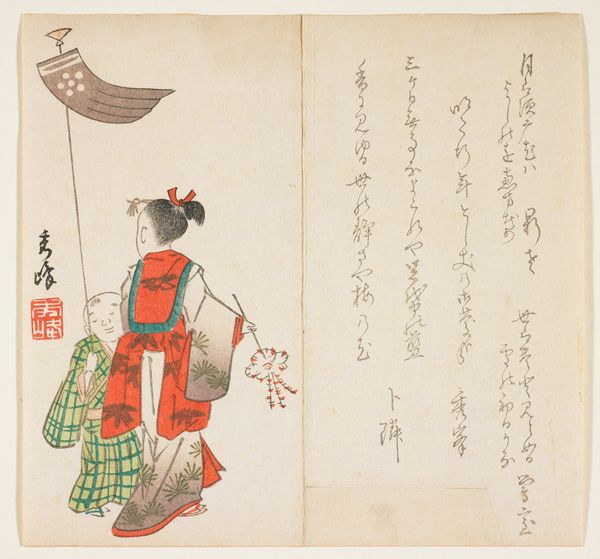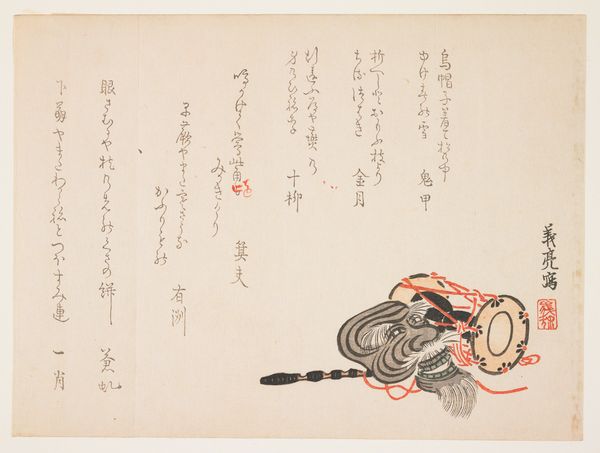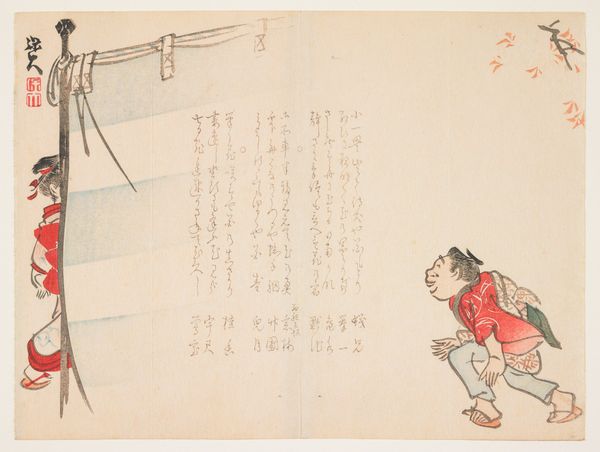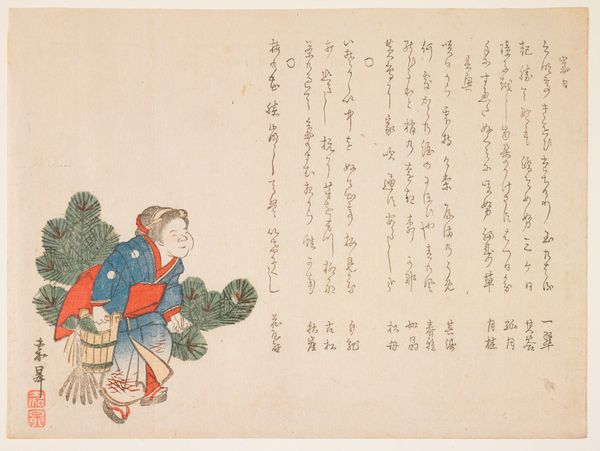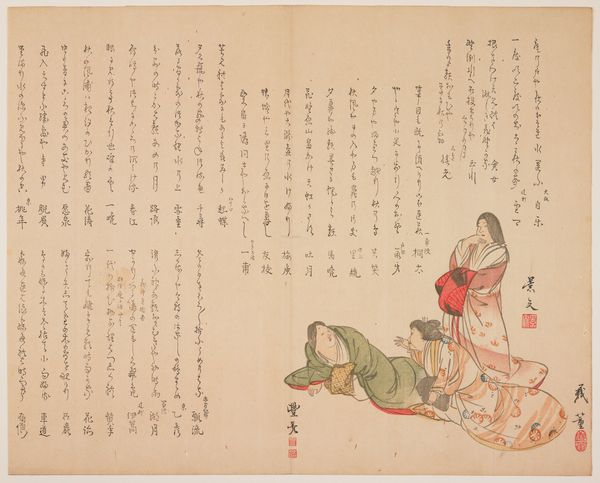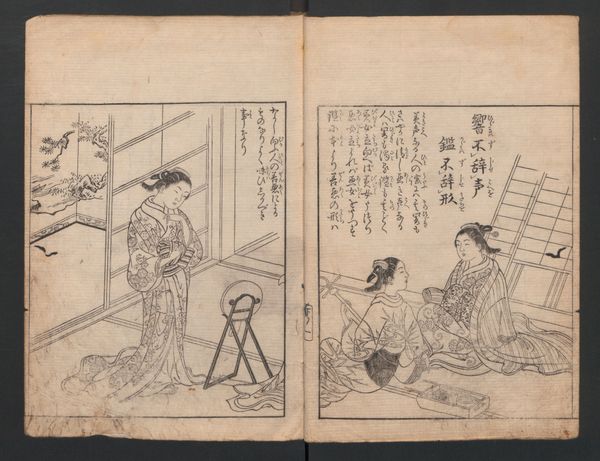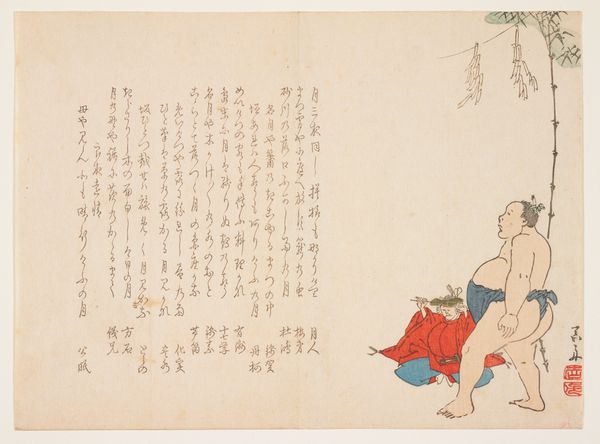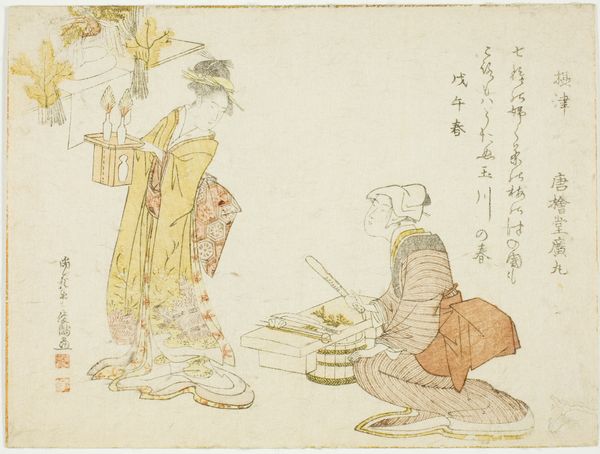
drawing, print, paper, ink, color-on-paper, woodblock-print
#
portrait
#
drawing
#
aged paper
#
toned paper
#
ink paper printed
# print
#
ukiyo-e
#
japan
#
paper
#
personal sketchbook
#
ink
#
color-on-paper
#
ink drawing experimentation
#
woodblock-print
#
sketchbook drawing
#
watercolour bleed
#
watercolour illustration
#
genre-painting
#
sketchbook art
#
watercolor
Dimensions: 7 7/8 x 9 3/4 in. (20 x 24.8 cm) (image, sheet)
Copyright: Public Domain
Hōshū’s woodblock print depicts an old man repairing a shōji screen. The shōji screen, a common feature in Japanese homes, represents a threshold between private and public space. The image's meaning lies in its depiction of everyday life in Japan and it emphasizes the value of labor, craftsmanship, and self-sufficiency, reflecting traditional Japanese values. The man's focus on repairing the screen suggests a sense of responsibility and care for his home. The presence of calligraphy and other traditional objects in the scene adds to the image's cultural context. Produced during the Meiji era (1868-1912) Japan, this print reflects the transition of Japan into a modern, industrialized nation, and its simultaneous attempts to maintain its cultural identity. Looking at works such as this involves accessing a wide range of cultural resources to understand better the social history of the print and the role of institutions in its dissemination.
Comments
No comments
Be the first to comment and join the conversation on the ultimate creative platform.

